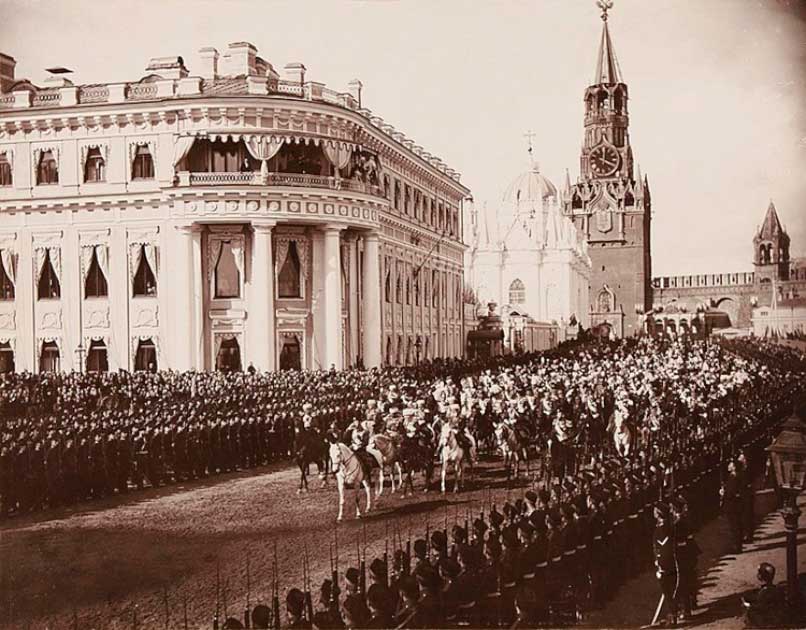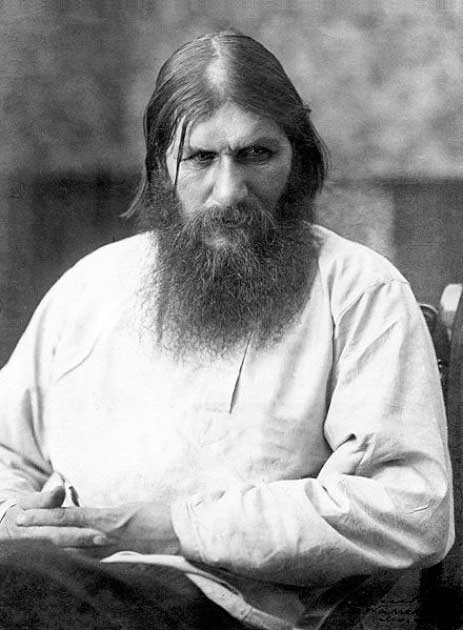History is full of pivotal moments that have shaped the world as we know it today. The Russian revolution of 1917 is one of these moments. It directly led to the rise of the Soviet Union, the Cold War, and arguably much of the unrest in the world today.
The causes of the revolution are myriad but one name is always central: Nicholas II, the last Tsar of Russia. If one man is to be blamed for the Russian Revolution, many modern historians would have us believe it was his fault.
But how accurate is this? Did Nicholas II ever have a chance of saving his Empire (and his life)? Or was the revolution fated from the beginning, built into the unsustainable structure of Imperial Russia?
Who Was Nicholas II of Russia?
Nicholas II was born on the 18th of May 1868. He was the eldest child of Alexander Alexandrovich and Tsarevna Maria Feodorovna. He was born during the reign of his grandfather, Emperor Alexander II.
Nicholas met his future wife, Alexandra Feodorovna, at a family wedding in 1884 when she was only 12 and he was 16. They did not enter an adult relationship however until five years later, in 1889. Nicholas proposed to her in 1894 which was perhaps his first misstep. Alexandra had failed to make a positive impression on his family or, more ominously, on the Russian people.
By the autumn of 1894, Alexander III was on his death bed and it had become apparent Nicholas was not ready to rule. After his father’s death, Nicholas demanded that his wedding date be brought forward. It seems that he was daunted by his new position and needed Alexandra by his side for support.

Nicholas was officially crowned on the 26th of May, 1896. He had visited the UK in 1893 and visited the House of Commons. He had been impressed by how the UK’s modern, constitutional monarchy worked. This gave hope to some Russians that Nicholas II would perhaps follow suit and be a more liberal leader than his father.
Instead, their hopes were dashed. Nicholas made it clear from the beginning that he would never surrender any of his power to elected officials. He still firmly believed in the divine right of kings and felt he had been placed on the throne by God himself.
This was Russia’s first taste of the kind of royal arrogance that would lead to the 1917 revolution.
What Was Russia Like During His Reign?
Nicholas’s ascension to the throne came at a time when Russia was going through a massive period of change. Firstly, while European powers had already gone through the industrial revolution, Russia lagged slightly behind.
- Cold Hearted: Why Did Empress Anna Ivanovna Build An Ice Palace?
- Anna Anderson: Imposter of Duchess Anastasia
Russia didn’t experience its industrial revolution until the turn of the 20th century. When it did, massive social and political changes came with it. The populations of major Russian cities more than doubled as rural Russians flocked to the cities. This led to overcrowding and terrible living conditions.
Russia was also still recovering from several setbacks. It had been through several costly wars, including the Crimean War, and experienced several poor harvests that led to a famine between 1891-1892, costing at least 400,000 lives.
The Russo-Japanese War of 1904-1905 also saw heavy Russian losses. By the time the war was over and Russia had lost thousands of men had died and ships had sunk, at a great financial cost. Russia’s once strong international reputation was also left in tatters
What did Nicholas Do Wrong?
While some of these things were out of Nicholas’s control, many were not. For example, the writing had been on the wall for some time that Russia would lose the Russo-Japanese war. Several of Nicholas’s aides, including members of his family, pleaded with him to surrender and sue for peace. Nicholas refused and dragged the war out, at great cost to Russia.
Nicholas believed that the war would be a god-given victory. Throughout the war, he boasted that Russia was winning, even though it was evident they were losing. This arrogance caused educated Russians to look at how Russia was progressing and compared it with their European neighbors. They concluded that Russia’s monarchy and the aristocrats who supported it were holding Russia back.
The voicing of these concerns led to the Bloody Sunday massacre of 1905. Russian workers gathered to protest the monarchy but were massacred by the Tsar’s troops. The soldiers had been ordered to bring any hint of a rebellion to a swift end. What followed was a series of protests, strikes, and mutinies.
The historical record shows Nicholas didn’t handle these revolutionaries well. He buried his head in the sand and procrastinated, waiting for the whole thing to blow over. He made idle promises that things would change for the better, but did nothing to address the grievances.

Finally, in October 1905, a massive general strike paralyzed the entire country. It was only then that Nicholas realized how serious the threat to his power had become. He signed the October Manifesto, establishing the Imperial Duma, the Russian Parliament. This was essentially a legislative body that handed some of Nicholas’s authority over to elected officials.
The Duma supposedly had legislative and oversight powers but it quickly became clear this was a token gesture. The 1906 constitution stated that Nicholas was still the “supreme autocrat”. Safe to say Nicholas and the Duma did not have a great relationship.
The Duma repeatedly demanded things like universal suffrage and massive land reforms, which Nicholas refused to grant. Things got so bad that he dissolved the first two Duma after they insisted on repeatedly arguing with him.
Russia’s entry into WW1 did Nicholas no favors. His poor handling of earlier emergencies meant that at the advent of WW1 Russia was ill-prepared to join the fighting. In August of 1914 Russia entered the war in defense of the Serbs against the Germans. The outdated and poorly equipped Russian military was no match for the industrialized German army, and Russian losses were unprecedented.
The war also caused havoc on Russian supply lines. Food and fuel shortages meant many Russians starved as inflation began to skyrocket. Nicholas joined his troops on the frontline in 1915 to take direct command. He hoped taking control would give him a PR boost.
It did not work. Not only was the war a disaster, but his deeply unpopular wife used his absence as a chance to fire elected officials she did not like. Many of these officials had voiced their distaste for Grigory Rasputin. Rasputin was a controversial “mystical healer” who had wormed his way into the Royal family by treating their sickly son.
In many ways, Rasputin was the final nail in the coffin of the Romanov family. Nobles, officials, and the general population were concerned about the vast amount of control he seemed able to exert over the royal court and Russian politics. By the time he was assassinated in December of 1916, the public had lost all patience.

Nicholas kept shutting down the Duma, corruption was out of hand and the economy continued to spiral. These factors all led to the February Revolution of 1917 which marked the beginning of the end for the Russian Royal Family.
A Catalogue or Errors
So could Nicholas have saved Imperial Russia if he had been a more competent leader? It’s hard to say. Russia was overdue for massive change by the beginning of the 20th Century. The Industrial revolution, world war, and global politics opened the eyes of Russians to the rest of the world.
At the same time, every chance Nicholas received to save Imperial Russia, he rejected. His belief in his autocracy and god-given right to power repeatedly blinded him. He ignored his advisors and was misled by his arrogance. He had a habit of doing the right thing only when it was too late.
Nicholas was likely doomed in that no matter what he tried he was never going to save HIS Imperial Russia. But if he had been more willing to listen to the demands of the people and if he had copied the monarchies of nations like the UK, he might have been able to save some form of Imperial Russia.
Top Image: Tsar Nicholas II with his cousin, George V of England. Why does the British monarchy endure to this day, when the Russian royal family were all murdered in 1917? Source: Ernst Sandau / Public Domain.